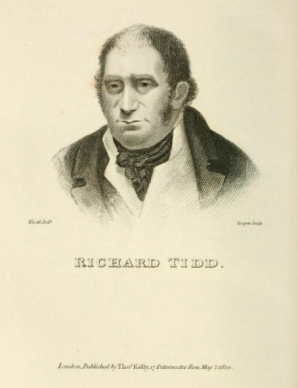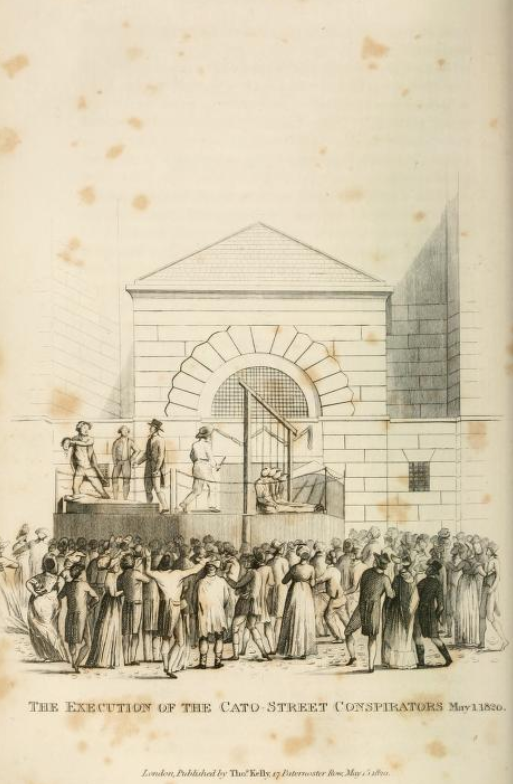Jane Austen and London is a subject that should have its own shelf(ves). This is one of those down the rabbit hole in collecting that will either find you on a completely different path of book buying or become for you “the road not taken.” There will be many such roads if you embark on the adventure of collecting Jane Austen – as you all likely know, it is an endless morass…
Long before I began to collect Jane Austen, I started a collection of books on London – I love London for many reasons – my parents were born in England so I became an anglophile from an early age; I studied in London for a college semester (political science – don’t ask!); and during that semester met my husband, so it serves as a Romantic haven for me. I started collecting any books I could find on London – a heady task (almost as impossible as Jane Austen) – then narrowed it to children’s books about or set in London (many more than you would think) – then when Austen hit my radar I began to focus just on Regency-era London (a bit more manageable but larger than my pocket book or shelf space nonetheless). So I now have rather a mish-mash of various titles, some very collectible and some just commonplace treatises great for reference and beautiful pictures. When I began doing talks on Jane Austen and London, I found a real use for the books I had as well as an excuse to acquire more….and so you see my mighty fall into the Rabbit Hole of collecting….
Today I will just share three titles of the many, for no particular reason other than to show the diversity of what’s out there – I append at the end the very select bibliography handout for the talk I give, though is now a bit outdated and does not contain all the books I have – if you have any favorite books on London, please share the titles in the comments.
1. Regency London, by Stella Margetson. New York: Praeger, 1971 [London: Cassell, 1971].
Margetson wrote a few novels but also a number of books of English social history especially of the late 18th and the 19th-century. This book on Regency London is a short introductory text that covers the basics, with black and white contemporary illustrations throughout:
- Carlton House
- The Mercantile City
- Westminster and Government
- The Regent and the Architect
- High Society
- Entertainment
- The Artists and the Writers
- The Populace
- Some Visitors to London [Jane gets a few pages on her stays in London]
- An Expanding City

FYI: Cassell / Praeger did a series of five books on London:
- Roman London, by Ralph Merrifield
- Medieval London, by Timothy Baker
- Elizabethan London, by Martin Holmes
- Regency London, by Stella Margetson
- Victorian London, by Priscilla Metcalf
******************
2. The A to Z of Regency London, Introduction by Paul Laxton; index compiled by Joseph Wisdom. Lympne Castle, Kent: Harry Margary, in association with Guildhall Library, London, 1985.
This historical atlas is based on Richard Horwood’s survey of London in 1792-9 and updated by William Faden in 1813 – it shows the streets, lanes, courts, yards, and alleys, but also every individual building with its street number – the 40 sheets of the original Horwood have been photographically reduced, and the index for this edition expands the original by threefold.
The Horwood map is available online in various formats [a terrific one is here: https://www.romanticlondon.org/explore-horwoods-plan/#16/51.5112/-0.0747], but this is a treasure to have close at hand. One can easily trace Austen’s meanderings described in her letters, and follow the many characters in Sense and Sensibility – where they live, visit, and shop – her one novel where London is central to the plot (though it is also where the dilemma of Harriet gets sorted!)
For those of you who love maps, there are others to choose from in this series: The A to Z of Elizabethan London, Restoration London, Georgian London, Victorian London, and Edwardian London (there is also one for Georgian Dublin)

****************
3. One Day in Regency England, by Alastair Scott. Brighton: Robert Tyndall, 1974.
This is a children’s book, and about all of England not just London – but it is a delightful introduction to the period and filled with color and black and white contemporary illustrations; the cover is designed by Gordon King.
The book presents the day of July 20, 1813 in the lives of several characters, starting in the home of Charles Henry Longhurst – we meet him and his family and their friends and his servants, the children in school, life in the country vs. the day in the City – all presented as what goes on in these individual lives in the Morning, Afternoon and Evening. It is skillfully and entertainingly done and in 48 pages takes us in to traveling carriages, cookery in the kitchen, a dinner party and then off to Vauxhall Gardens, all the while getting a glimpse of those doing all the work behind the scenes! It is quite an exhausting day!
As you can see in the bottom paragraph in the above page image, Scott writes that Longhurst’s daughter Amelia is quite taken with Jane Austen and reading Pride and Prejudice – when suddenly her attention is drawn to the arrival of a small chimney-sweep – and thus we are privy to that bit of history, of poor, young, soot-covered boys and the realities and dangers of that job.
[This Day Book Series also includes a number of other “One Day” adventures in a variety of time periods in England and elsewhere: Shakespeare’s England, Roman Britain, Victorian, Medieval, WWI, WWII, etc.]
***********
As noted, this bibliography is very select but gives you an idea of the variety of works on London and specifically London during Jane Austen’s time – again, it is a bit outdated….
‘Jane Austen’s London in Fact and Fiction’: Select Bibliography
The A – Z of Regency London; introduction by Paul Laxton. London: Harry Margary / Guildhall Library, 1985.
Ackermann, R. The Microcosm of London, or London in Miniature. Rpt. ed. London: Methuen, 1904.
Ackroyd, Peter. London: The Biography. London: Chatto & Windus, 2000.
Allen, Louise. Walks Through Regency London. UK: Shire, 2013. [2nd revised ed. 2014]
Borer, Mary Cathcart. An Illustrated Guide to London 1800. New York: St. Martin’s, 1988.
Byrne, Paula. Jane Austen and the Theatre. London: Hambledon, 2002.
Cunningham, Peter. Handbook of London: Past and Present. New ed. London: Murray, 1850.
Easton, Celia. “Austen’s Urban Redemption: Rejecting Richardson’s View of the City.” Persuasions 26 (2004): 121-35.
Edwards, Anne-Marie. In the Steps of Jane Austen. 3rd ed. Newbury, UK: Countryside, 1996.
Elmes, James. A Topographical Dictionary of London and Its Environs. London: Whitaker, 1831. Google Book.
George, Dorothy. London Life in the XVIIIth Century. London: Kegan, Paul, 1925.
Hibbert, Christopher. London: The Biography of a City. London: Longmans, 1969.
Hill, Douglas. A Hundred Years of Georgian London from the Accession of George I to the Heyday of the Regency. London: MacDonald, 1970.
Hughson, David. Walks Through London. London: Sherwood, Neely and Jones, 1817.
Kaplan, Laurie. “Emma and ‘the children in Brunswick Square.’” Perusasions 31 (2009): 236-47.
Knight, Charles, ed. London. London: Charles Knight, 1841. Ebook, Tufts Digital Library < http://hdl.handle.net/10427/53832 >
Leigh, Samuel. Leigh’s New Picture of London. New ed. London: Leigh, 1827.
Margetson, Stella. Regency London. New York: Praeger, 1971.
Picard, Liza. Dr. Johnson’s London. London: Weidenfeld, 2000.
_____. Victorian London. London: Weidenfeld, 2005.
Porter, Roy. London: A Social History. Cambridge: Harvard UP, 1995.
Richardson, John. Covent Garden Past. London: Historical, 1995.
_____. London and Its People: A Social History from Medieval Times to the Present Day. London: Barrie & Jenkins, 1995.
Quin, Vera. Jane Austen Visits London. Cappella Archive, 2008.
Saunders, Ann. The Art and Architecture of London: An Illustrated Guide. 2nd ed. Oxford: Phaidon, 1988.
Stabler, Jane. “Cities.” Jane Austen in Context. Ed. Janet Todd. Cambridge: Cambridge UP, 2005. 204-14.
Summerson, John. Georgian London. New ed. New Haven: Yale UP, 2003.
Tannahill, Reay. Regency England. London: Folio Society, 1964.
Vickery, Amanda. Behind Closed Doors: At Home in Georgian England. New Haven: Yale UP, 2009.
Watson, Winifred. Jane Austen in London. Chawton: JAS, 1960.
Whitfield, Peter. London: A Life in Maps. London: British Library, 2006.
Worsley, Giles. Architectural Drawings of the Regency Period, 1790-1837. London: Andre Deutsch, 1991.
Select Online Sources:
[some are no longer available; there have been many more sources added to the internet since I first compiled this]
Austenonly [Julie Wakefield]: http://austenonly.com/ ; http://ajaneaustengazetteer.com/
Bolles Collection: History of London. Tufts Digital Library: http://dl.tufts.edu/
British History Online: Survey of London: http://www.british-history.ac.uk/place.aspx?region=1
British Library: http://www.bl.uk/
Collage, City of London: http://collage.cityoflondon.gov.uk/collage/app
Geograph Great Britain and Ireland. http://www.geograph.org.uk/
Georgian Index: http://www.georgianindex.net/
Georgian London: http://www.georgianlondon.com/
Jane Austen’s London blog (Louise Allen): http://janeaustenslondon.com/
Jane Austen’s World: http://janeaustensworld.wordpress.com/
JASA – Jane Austen Society of Australia. “Jane Austen in London” Conference. March 2001. http://www.jasa.net.au/london/index.htm [no longer available]
Lewis Walpole Library: http://www.library.yale.edu/walpole/
London Ancestor: http://www.londonancestor.com/
London Calling [Tony Grant]: http://general-southerner.blogspot.com/
London Lives 1690-1800: http://www.londonlives.org/
London Museum: http://www.museumoflondon.org.uk/English/
London’s Past Online: http://www.history.ac.uk/projects/londons-past-online
Mapco: http://mapco.net/london.htm
Mollands: http://www.mollands.net/
Nancy Regency Researcher: http://www.susannaives.com/nancyregencyresearcher/ [no longer available]
Old London Maps: http://www.oldlondonmaps.com/
One London One blog: http://onelondonone.blogspot.com/
Pascal Bonenfant: http://www.pascalbonenfant.com/
Regency Encyclopedia: http://www.reg-ency.com/
The Republic of Pemberley: http://www.pemberley.com/
Romantic London: https://www.romanticlondon.org/ [an amazing new site!]
[Compiled by Deborah Barnum. 3-24-11 (partially updated 3/2016)]



































































































